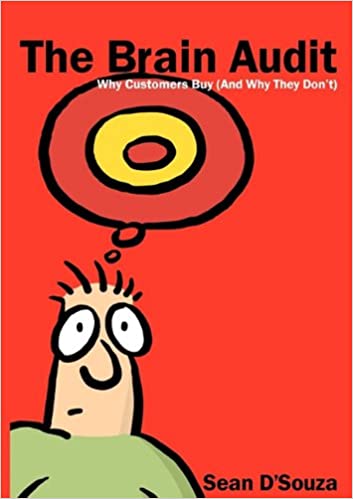This post is part of the 📖 The Brain Audit series.
Today I am reading a new chapter Bag 5: The Testimonials from the book The Brain Audit: Why Customers Buy (and Why They Don’t) written by Author, Sean D’Souza.
Do you often wonder what your customer is thinking? Don’t leave the thought process to chance and let that customer walk away. Your customers don’t want to walk away. They want to buy from you.
The Brain Audit shows you how the customer takes decisions. And what you need to put in place, so that the customer feels happy to buy products or services from you.
Yesterday, I started reading **[TThe Objections](https://5pagesaday.com/books/the-brain-audit-9/)** chapter from the book [The Brain Audit](https://www.amazon.com/Brain-Audit-Customers-They-Dont/dp/0473175045/ref=as_li_ss_tl?_encoding=UTF8&qid=1606843742&sr=8-1&linkCode=ll1&tag=5pagesaday-20&linkId=cb2cc6887e636e1e7b9319a61d70dc72&language=en_US)
From the introduction chapter, we read and understand that we need to know the 7 elements of why our customers buy from us or why they don’t. Here are the 7 things for you to recap.
- Bag No. 1: The Problem
- Bag No. 2: The Solution
- Bag No. 3: The Target Profile (The Trigger)
- Bag No. 4: The Objections
Bag No. 5: The Testimonials(we are reading this today)- Bag No. 6: The Risk Reversal
- Bag No. 7: The Uniqueness
Bag 5: The Testimonials
Most testimonials are made of sugar and spice, and everything nice, which makes them not-so-reliable because there are always two sides to a story.
So what would it take to make a testimonial believable?

Do you know you can listen to this book on Amazon Audible for FREE?
If you are not into reading like me, then you can listen to this book for FREE on Amazon Audible
Don't Read. Just 🎧Presenting the ‘reverse testimonial!’
A reverse testimonial is simply a testimonial that starts in reverse.
A reverse testimonial talks about doubt. It starts with the scepticism first. It describes the fear or uncertainty racing through the customer’s mind at the point of purchase.
A reverse testimonial works because it speaks to us, in the way we talk to each other.
We say things like: “You know that seedy-looking restaurant, and how you don’t really feel like going inside? They’ve got the most amazing food.”
Instead of ‘getting a testimonial’, it’s important to ‘construct a testimonial’ instead.
Construction means you’re using structure to get your testimonial. When you use structure, you don’t get random testimonials, but instead, get testimonials that are specific and story-like.
Key Takeaways
The reason why clients promise to write you a testimonial and don’t do so is that they’re lost for words.
There are six questions you need to ask to get outstanding reverse testimonials. Not only do you get great, believable testimonials, but each testimonial is rich with emotion and detail.
We will examine those six parts tomorrow. Until then, keep reading.
Summary
You don’t want to ‘get’ a testimonial. You want to have a plan, so you can ‘construct’ the testimonial in a systematic manner instead.
Buy or not buy?
This book is excellent. Do not hesitate to pick this. Pick the physical book, so you take notes and highlight the bits you want to reference later. This book is such a kind of book where you need to pass it to the next generation.
Listen, I don’t care whether you buy the book using one of the links on the page or not but just buy. You will be glad for my recommendation.
Author(s): Sean D'Souza
Part 10 of 15 in the 📖 The Brain Audit book series.
Series Start | The Brain Audit: Why Customers Buy (and Why They Don't) - Day 9 | The Brain Audit: Why Customers Buy (and Why They Don't) - Day 11
